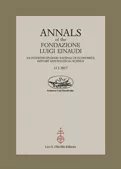This article analyzes two colonization strategies carried out by the Portuguese between the 15th and 16th centuries, demonstrating how they had opposed consequences on the environment. We propose a new typology of the Portuguese colonies in this period, considering demography, spatial control, and leading economic activities.
The first Portuguese colonization strategy was what we define as colonies of circulation. In this case, occupation of territory was restricted. The Portuguese did not directly control the production of goods they needed; they only controlled their trade. Their domination was done through military occupation and the creation of factories.
The second strategy was what we call colonies of production. Here, the occupation of the territory was extensive the Portuguese directly controlled the production of commodities.
These colonization strategies had distinct environmental consequences. In the first case, the permanent conflicts between the Portuguese and the Maghrebians led to the abandonment of cultivated fields, the reduction of the agricultural frontier, and even the return of wild animals to the outskirts of the cities. Meanwhile, in the Atlantic islands, particularly Madeira, deforestation occurred at unprecedented speeds, exotic species were introduced with severe consequences for the local ecosystem, and rapid soil degradation was promoted.



